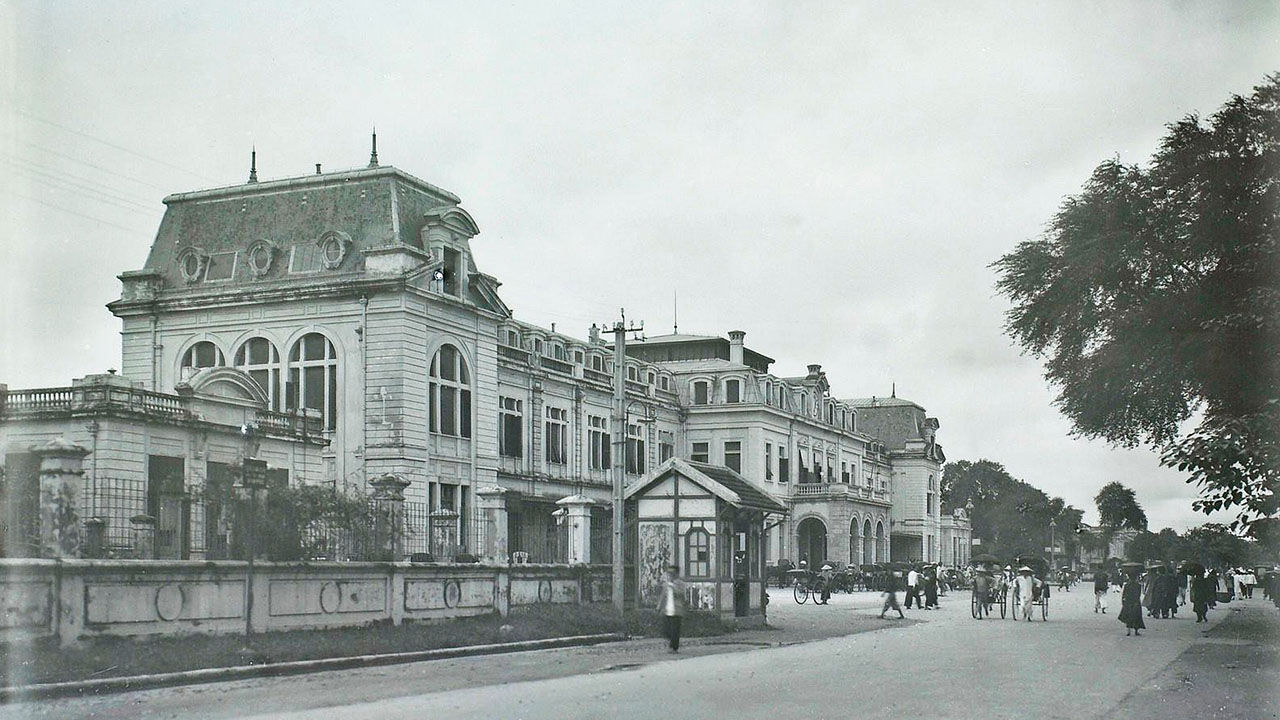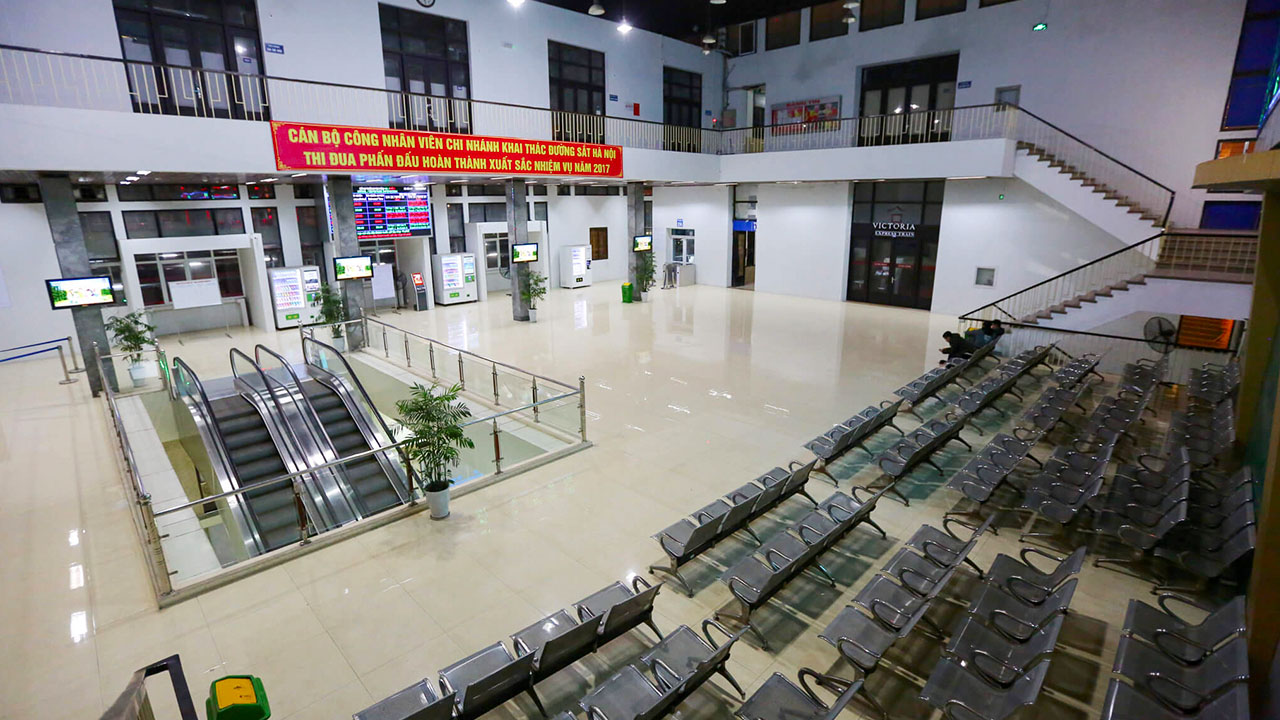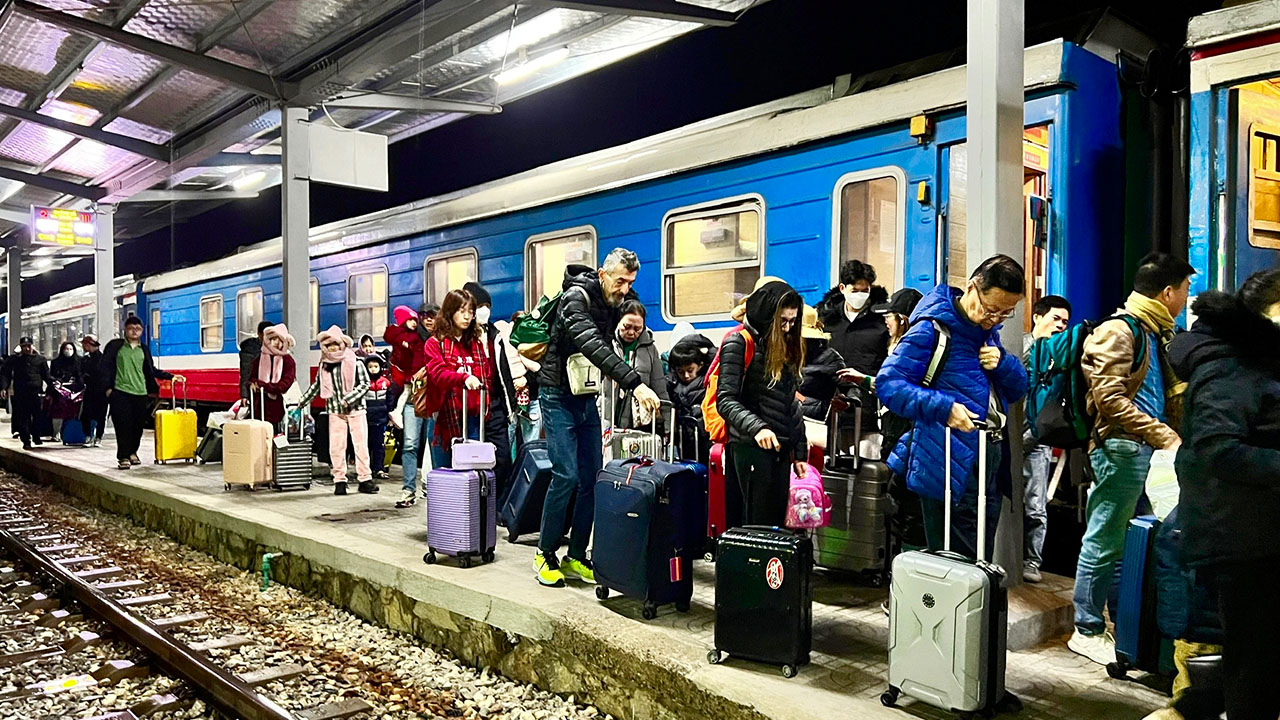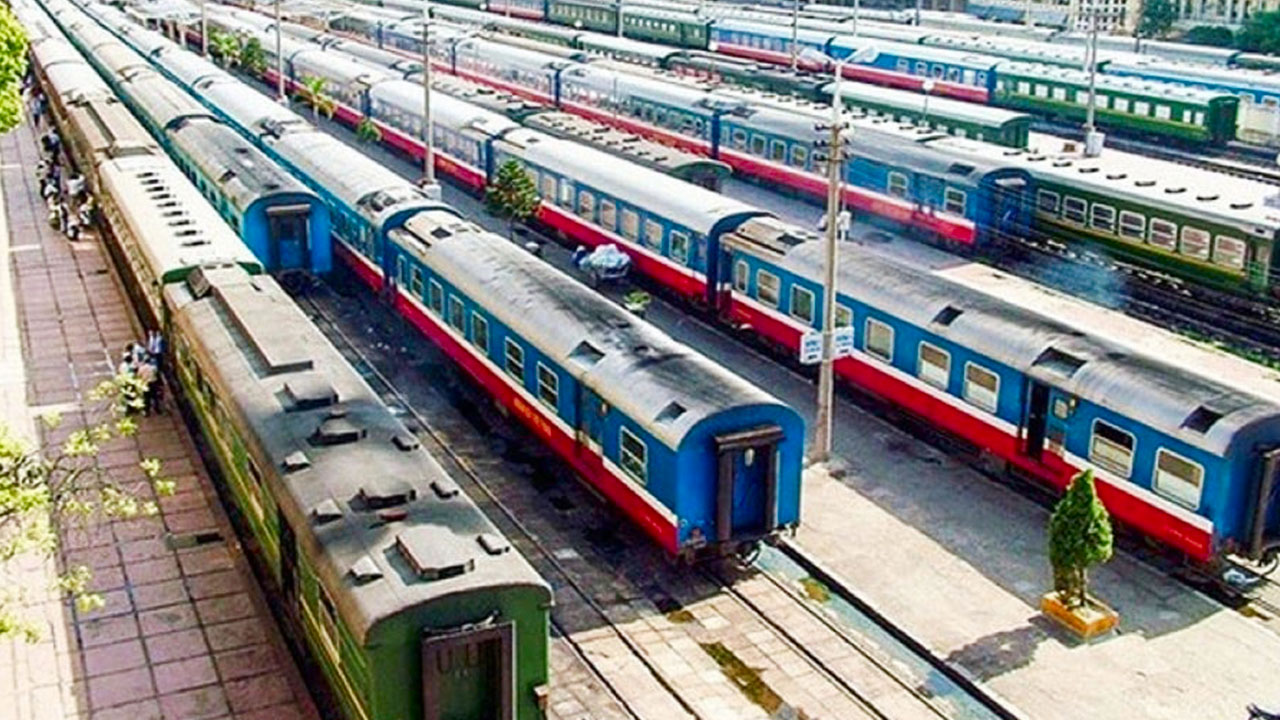The Hanoi Railway Station, also known as Ga Hà Nội, stands as a pivotal transportation hub in the heart of Vietnam’s capital city. Originally constructed by the French in 1902, this historic station has witnessed the ebbs and flows of history, from colonial times through wars and into modernity. Its rich heritage combined with modern advancements make it a vital point of interest for travelers, historians, and commuters alike.

In this comprehensive article, we will delve deeply into the various facets of Hanoi Railway Station, offering an in-depth look at its historical significance, architectural features, and the myriad of services it provides. We’ll explore the station’s accessibility, delve into its architectural beauty, and touch on the train services, safety measures, and future developments. By the end of this piece, readers will have a thorough understanding of why Hanoi Railway Station is not just a transit point, but a significant cultural and historical landmark.
Overview of Hanoi Railway Station
Historical Significance
Built by the French colonial authorities in 1902, Hanoi Railway Station epitomizes the era’s grand architectural ambitions. Originally designed by Henri Vildieu, the station featured a distinctly Western-style structure. During its early years, it was a symbol of French Indochina’s infrastructural prowess. The station played a crucial role in connecting Hanoi with other major cities, facilitating not only transportation but also commerce and communication.

The Vietnam War left an indelible mark on the station. Targeted by American bombings in 1972, much of the original structure was damaged. However, the resilient spirit of Hanoi led to the preservation of the historic side wings, even as the central hall was rebuilt in a modern style in 1976. This blend of French colonial and modern architecture stands as a testament to Hanoi’s ability to adapt and persevere through challenging times.
The significance of Hanoi Railway Station extends beyond its architecture. It has been a witness to pivotal moments in Vietnam’s history, including the movement of military troops, refugees, and supplies during wartime. Additionally, it has been a focal point for the post-war reunification efforts, symbolizing the unity and progress of a nation that has emerged from the shadows of conflict.
Location and Accessibility
Geographical Location
Strategically positioned at 120 Le Duan Street, the Hanoi Railway Station enjoys a prime location just 2 kilometers from the bustling Old Quarter. This central positioning makes it a convenient starting point for tourists and locals alike. Key landmarks such as the Ngon Restaurant, Melia Hotel, and Moevenpick Hotel are within walking distance, amplifying the station’s accessibility and connectivity.
A mere 10-minute walk from the Old Quarter and a 45-minute drive from Noi Bai International Airport positions the station as a gateway to the vibrant heart of Hanoi. This proximity to major landmarks and transport hubs underscores its importance in the city’s daily life and tourism industry.
Transportation Links
Accessibility to the Hanoi Railway Station is facilitated by a variety of transportation options. These include:
- Taxis: A taxi ride from the Old Quarter to the station costs approximately $2-4 USD, while a trip from Hanoi’s Noi Bai Airport can cost around $15 USD.
- Buses: Several bus routes, including #1 and #43, service the station, providing an economical and efficient means of transportation.
- Xe-om (Motorbike Taxis): A traditional and quick mode of transport, a Xe-om ride from the Old Quarter to the station costs around $1-2 USD.
- Walking: For those staying nearby, walking is a feasible option given the station’s central location.
The station’s division into Station A and Station B caters to different regions, enhancing the organization’s efficiency and passenger convenience. Station A, located on Le Duan Street, primarily serves longer routes to major destinations like Ho Chi Minh City and Lao Cai, whereas Station B, located on Tran Quy Cap Street, handles northern Vietnam routes.
Architectural Features
Design and Structure
The architectural design of Hanoi Railway Station stands as a mix of historical and contemporary elements. The station has undergone numerous changes since its inception. The initial structure, with its French-influenced design and red-tiled roof, exudes a sense of grandeur and history. This is akin to stepping back into the colonial era, where the architectural style carries stories and aesthetics of a bygone time.

Post-war reconstruction introduced a modernist twist to the central hall, marrying the antique wings with a newer, more utilitarian middle section. This synergy of styles reflects Hanoi’s growth – the merging of tradition with modernity. The layout is notably complex, with three departure gates downstairs and a multi-functional upper floor, including ticket counters, shops, and essential facilities. This maze-like setup requires orientation but offers a comprehensive one-stop experience for travelers.
Notable Architectural Elements

Key architectural features of the Hanoi Railway Station include:
- Red-tiled Roof: This iconic feature hearkens back to its French colonial roots, providing an aesthetic as well as historical value.
- Historic Wings: These preserved sections of the station offer a glimpse into the original design ethos and architectural style of early 20th century Hanoi.
- Modern Central Hall: Rebuilt in 1976, this part of the station provides a stark contrast to the historic wings, embodying Vietnam’s resilience and modernization efforts post-war.
- Intricate Layout: The three departure gates and the layered structure of the station create a complex, functional space for handling large volumes of passengers and services.
These elements not only define the station’s physical appearance but also tell a story of survival, adaptation, and progress, mirroring the broader narrative of the city it serves.
Facilities and Services
Ticketing Services
The Hanoi Railway Station’s ticketing services cater to both domestic and international travelers with multiple counters situated in the wings of the main terminal building. English-speaking staff are stationed at key counters, such as Counter 3, ensuring that language barriers are minimized. Despite occasional long queues, ticket purchasing is straightforward if approached with the right preparedness.

Pro tip: Write down your destination, travel time, and seat preference in Vietnamese (or have a translation ready) to streamline the process. This small step can significantly cut down on communication hurdles, making the experience smoother and quicker.
Waiting Areas
Comfort is a priority at the station with multiple waiting areas designed to cater to the high footfall. The upstairs waiting area, distinct in its architectural style, offers a serene space away from the bustling downstairs. Various seating options and lounges are available to accommodate different comfort needs and preferences.
Food and Beverage Options
Food and beverage facilities at Hanoi Railway Station are plentiful and varied. Options include a Lotteria fast food chain for those seeking quick bites and various street food vendors offering a taste of local cuisine. A quick stroll outside the station can introduce travelers to a world of Vietnamese culinary delights, from pho (noodle soup) to banh mi (Vietnamese sandwich).
Shops and Retail
Convenience stores, souvenir shops, and essential services such as ATMs and free WiFi are readily available within the station complex. Whether you’re looking to grab travel essentials or buy a memento of your journey, the retail options at the station cater to a wide array of needs.
Train Services
Domestic Train Routes

The Hanoi Railway Station is a major hub for domestic train routes, connecting travelers to various parts of the country. The three primary lines are:
- Hanoi to Ho Chi Minh City: The Reunification Express running on this route is a testament to Vietnam’s post-war unity. Departing five times daily, the journey spans approximately 1,726 kilometers and takes around 33-36 hours. Each departure and arrival time caters to different travel preferences, whether you prefer a day or night journey.
- Hanoi to Sapa (Lao Cai): Offering one daily service, this route is popular among tourists heading to the picturesque hill station of Sapa. The train departs at 22:00 and arrives in Lao Cai at 05:55, providing a convenient overnight travel option.
- Hanoi to Hai Phong: With four services daily, this route caters to those traveling to the coastal city of Hai Phong. Departure times are 06:00, 09:25, 15:20, and 18:15, making it a flexible option for travelers.
International Train Services
While primarily serving domestic travel, Hanoi Railway Station also has facilities for international journeys. Routes to neighboring China are available, highlighting the cross-border connectivity facilitated by the station. These services underscore Hanoi’s role as a gateway not just within Vietnam but to other parts of Southeast Asia.
Special Events and Activities
Cultural Events Hosted
Hanoi Railway Station is not just a travel hub but also a venue for significant cultural events. A prime example is the “Heritage Journey” organized by Vietnam Railways from November 7 to November 26, 2023. This event featured art exhibitions and short train journeys between Hanoi and Gia Lam, priced at an affordable 20,000 VND per trip. Such initiatives highlight the station’s role in promoting cultural heritage and community engagement.
Tourist Activities

The station itself is a tourist attraction, located conveniently close to various historic sites and cultural hotspots. The Heritage Journey event, for example, allowed visitors to explore the Gia Lam Locomotive Factory and the steam locomotive, “Tu Luc,” a symbol of Vietnam’s industrial heritage. These tourist-centric activities enhance the station’s appeal, giving visitors a holistic experience of Vietnamese culture and history.
Safety and Security
Security Measures
Ensuring passenger safety is paramount at Hanoi Railway Station. The ongoing efforts by the Vietnam Railways Administration include heightened security protocols during peak travel seasons, comprehensive safety inspections, and monitoring systems aimed at preventing incidents. These measures, particularly during the summer of 2023, have significantly bolstered the station’s safety profile.
The advanced training provided to train drivers on safe operation and incident management is a critical component of the station’s safety framework. Additionally, the Nhon-Hanoi Railway Station project has achieved system safety certification following rigorous independent assessments, reflecting a commitment to uncompromised safety standards.
Emergency Procedures
The station’s detailed emergency procedures ensure that passengers are well-informed and prepared in case of unforeseen incidents. Clear signage and instructions, coupled with trained staff, are geared towards managing emergencies efficiently. This proactive approach fosters a sense of security and confidence among travelers, ensuring that their journey through the station is as safe as it is comfortable.
Future Developments
Planned Renovations

Exciting changes are on the horizon for Hanoi Railway Station. As part of Hanoi’s extensive urban railway plans, the station is set to undergo significant renovations and expansions. This includes relocating railway infrastructure to accommodate Metro Line 1, the Yen Vien-Ngoc Hoi route, which will integrate with the North-South express railway.
Expansion Projects
The ambitious goal to establish a 600km urban railway network by 2045 underscores the transformative vision for Hanoi’s transportation landscape. The integration at the new Ngoc Hoi station will require passengers to transfer between the high-speed North-South rail and Metro Line 1 to reach the city center. Published reports in July 2023 detail these expansions, indicating no compromises on the timeline or safety standards.
The future developments not only promise enhanced connectivity but also reflect a forward-thinking approach to urban mobility, aiming to meet the growing demands of one of Southeast Asia’s most dynamic cities.
Conclusion
Summary of Key Points
In conclusion, the Hanoi Railway Station is a symbol of Vietnam’s rich history and modern progress. From its French colonial roots to the contemporary expansions, the station represents resilience and growth. Whether it’s the intimate blend of old and new architecture, the comprehensive transportation links, the varied facilities and services, or the focused safety measures, every aspect of the station speaks volumes about its significance in Hanoi and beyond.
Final Thoughts on the Hanoi Railway Station
For travelers and historians alike, Hanoi Railway Station offers more than just a transit point it’s a journey through time and a glimpse into Vietnam’s soul. Its strategic location, diverse amenities, and cultural significance make it an essential stop for anyone exploring Hanoi. As future developments unfold, the station will continue to stand as a testament to the city’s enduring spirit and forward-looking vision.
By appreciating the intricate tapestry of services, history, and future aspirations, one gains a profound understanding of why this station remains a pivotal part of Hanoi’s landscape. For any visitor to Vietnam, Hanoi Railway Station is not just a gateway but a destination in itself.


